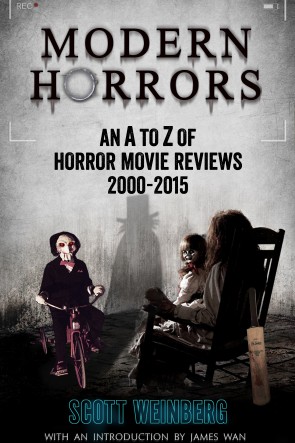FrightFest Review: RABID DOGS, aka ENRAGÉS (2015){0}
Is Éric Hannezo’s remake of Mario Bava’s 1974 “classic” vapid or valid?
“Boy or girl?”, the supermarket assistant asks the anxious man (Lambert Wilson) at her checkout counter.
“Pardon?”, replies the man, played by Lambert Wilson and credited only as ‘le père’, before muttering, “A girl. Girl,” and purchasing the red toy bunny that the saleswoman recommends for his daughter.
This is our introduction to ‘the father’ in Éric Hannezo’s feature debut Rabid Dogs (Enragés). It comes after a spectacular opening sequence in which bank robbers Sabri (Guillaume Gouix), Manu (Franck Gastambide) and Vincent (François Arnaud) shoot several civilians and police officers in the course of their getaway, lose their leader (Laurent Lucas) in the crossfire, and take a woman (Virginie Ledoyen) hostage. It is at this point that the criminals’ and the father’s paths intersect, as they seize his car at gunpoint, and we learn from the father why he was so distracted in his first scene: he is taking four-year-old Charlotte (Mégane Lemée), poorly and unconscious on the backseat of his car, for an emergency kidney transplant, without which she will be dead in seven hours. Yet the three bickering fugitives are determined to take the woman, the father and Charlotte in the opposite direction from the hospital, and with the clock ticking, the police gauntlet closing, the body count rising, and the future of everyone uncertain, all the pieces are in place for a tightly wound thriller that Hannezo certainly delivers.
It will turn out that the question “Boy or girl?”, and the father’s initial hesitancy in responding, come with multiple layers of meaning. In Mario Bava’s original feature, the sleeping child was in fact a boy, not a girl – indeed both films are adapted from Michael J. Carroll’s 1971 short story Man and Boy. So here the father’s stammered answer reveals a point of departure. Of course, Bava’s film has been undergoing such cosmetic changes since its inception: originally shot as Semaforo Rosso or Red Light in1974, but held up in legal wranglings after the death of a key investor, it was released posthumously in 1998 as the VHS Rabid Dogs (Cani Arrabbiati) and then rereleased (in an altered edit) as the 2007 DVD Kidnapped. While Bava turned a low budget to his advantage, crafting a sweaty, claustrophobic road trip where the camera only rarely left the confines of the father’s car, Hannezo’s is a slick, cool retelling, opening with a title sequence whose abstract kaleidoscope of guns, knives, cigarette lighters, cars and masks recalls a James Bond movie, and following that with a grandly staged urban shootout reminiscent of Heat (1995).
The masks in that title sequence are crucial. Not only do the criminals wear intimidating customised headgear during their chaotic heist, but once their boss has been killed, inexperienced Sabri has to pass as a capable replacement, Manu tries out not being the group’s pushover, and Vincent must at least attempt to pretend not to be a complete psychopath, while all three struggle to look innocent to anyone they meet along the way while essaying to convince themselves, against all the compounding evidence, that they are not natural born killers. Meanwhile the woman will try playing seductively to Manu’s vulnerabilities, while the father will do and say anything to ensure that he and Charlotte come out of this situation alive, even if that occasionally means helping the criminal cause.
“The law that governs the universe: things are not what they seem,” the father tells Sabri, observng the peculiar irony that the same day in which he learnt of a much-needed kidney’s availability for his daughter, and in which the bankrobbers successfully stole two million, has turned out so badly for both parties. So it seems entirely apt that this film of masks, ironies and concealed criminality should climax, in a sequence entirely new to Hannezo’s version, at a small village’s “Feast of the Bear”, where the locals are, like their unwilling guests, dressed in costume and armed to the teeth. It is the perfect carnivalesque location for the characters’ different masquerades to play out. Even if Hannezo’s film takes several diversions in its narrative trajectory, in the end it still follows Bava’s core narrative beats and twists, while totally overhauling the sparse style of the original into something grand, sleek and thoroughly contemporary, helped by Laurent Eyquem’s astonishing synth track and Kamal Derkaoui’s dynamic, often aerial photography. That the boy of the original turns out to be a girl here does not ultimately matter; but that fluidity of identity itself, in a universe of mere seemings, is everything, introducing a questioning note of ambiguity that pays off, in the final act, with its own mean-spirited reward. Rabid Dogs is not just a gripping film in its own right, but also a supersmart remake.
★★★★








